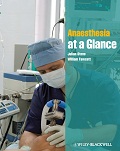A 15-year-old girl with a 2-day history of abdominal pain and vomiting is listed for a laparoscopic appendicectomy. Her ASA is 1.
-
1. What does an ASA of 1 mean?
Show Answer
Correct answer: The American Society of Anesthesiologists (ASA) physical status classification system is a 6-point score based on the patients premorbid condition, and is used to help predict anaesthetic risk. The suffix E is added if operations are emergencies. The classes are:
1. fit and well;
2. mild systemic disease, e.g. asthma;
3. severe systemic disease;
4. severe systemic disease that is a constant threat to life, e.g. unstable angina;
5. the moribund patient who is not expected to survive for >24 hours with or without surgery;
6. the brainstem dead patient who undergoes organ harvesting.
-
2. What are the physiological sequelae of vomiting?
Show Answer
Correct answer: Vomiting causes fluid and electrolyte depletion. Prolonged vomiting can cause significant hypokalaemia, hyponatraemia, hypovolaemia and metabolic alkalosis. If a reduced level of consciousness coexists, aspiration of gastric contents becomes a risk.
-
3. What are the key issues when planning an anaesthetic for this patient?
Show Answer
Correct answer: Plan to ensure fluid resuscitation and replacement of electrolyte imbalances.
Carry out a thorough assessment of the patient’s airway. A rapid sequence induction will be used, so an explanation of the process should be given to the patient, including the application of cricoid pressure and the reason for its use.
-
4. Why can patients get shoulder discomfort after a laparoscopy?
Show Answer
Correct answer: Postoperative referred pain to the shoulder might be experienced because CO2 absorption from the peritoneum can cause diaphragmatic irritation (C 3–5). This should also be discussed at the preoperative assessment.
-
5. What analgesia is likely to be required postoperatively?
Show Answer
Correct answer: A laparoscopic approach to appendix removal results in smaller skin and soft tissue incisions. Local anaesthetic can be infiltrated to the port sites, and along with regular paracetamol and an NSAID (e.g. ibuprofen) should be adequate, with a weak opiate such as codeine and a strong opiate (e.g. oral morphine) for break-through pain.

